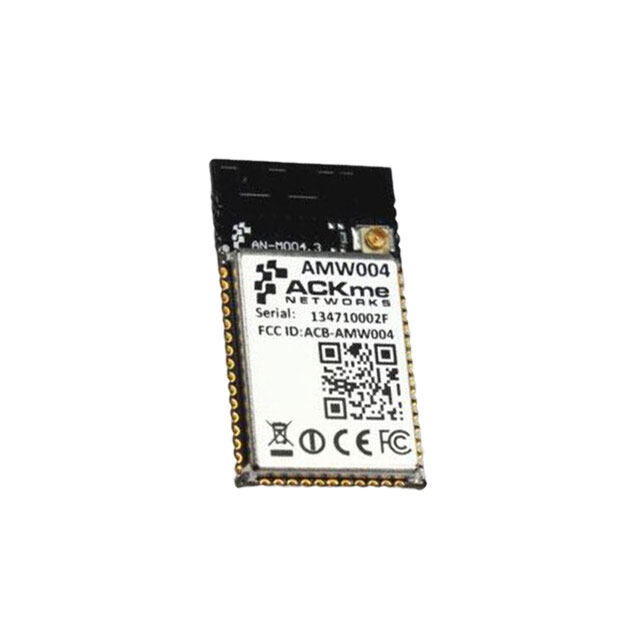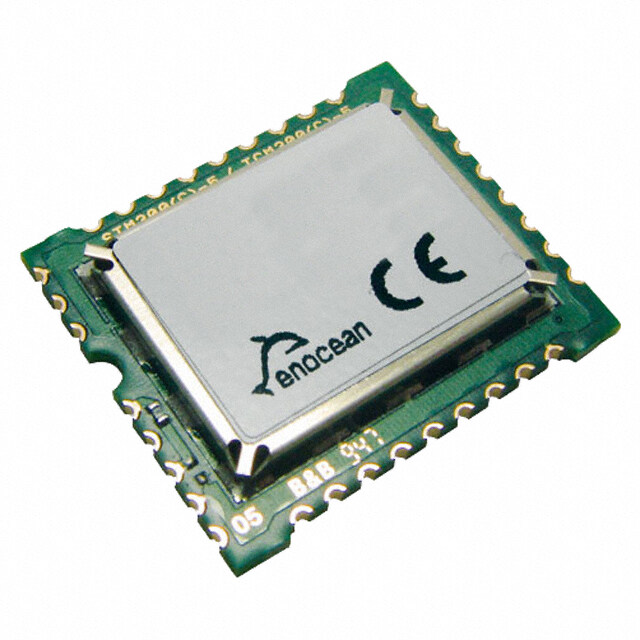ICGOO在线商城 > 射频/IF 和 RFID > RF 收发器模块 > BLE113-A-v1
- 型号: BLE113-A-v1
- 制造商: Bluegiga Technologies
- 库位|库存: xxxx|xxxx
- 要求:
| 数量阶梯 | 香港交货 | 国内含税 |
| +xxxx | $xxxx | ¥xxxx |
查看当月历史价格
查看今年历史价格
BLE113-A-v1产品简介:
ICGOO电子元器件商城为您提供BLE113-A-v1由Bluegiga Technologies设计生产,在icgoo商城现货销售,并且可以通过原厂、代理商等渠道进行代购。 BLE113-A-v1价格参考。Bluegiga TechnologiesBLE113-A-v1封装/规格:RF 收发器模块, Bluetooth Bluetooth v4.0 Transceiver Module 2.4GHz Integrated, Chip Surface Mount。您可以下载BLE113-A-v1参考资料、Datasheet数据手册功能说明书,资料中有BLE113-A-v1 详细功能的应用电路图电压和使用方法及教程。
| 参数 | 数值 |
| 产品目录 | |
| 描述 | CLASS 2 BLTOOTH 4.0 MODULE蓝牙/802.15.1 模块 Class2 BT Smart Module w/ Int Ant |
| 产品分类 | RF 收发器射频/无线模块 |
| 品牌 | Bluegiga TechnologiesBlueGiga Technologies Inc |
| 产品手册 | |
| 产品图片 |
|
| rohs | 符合RoHS无铅 / 符合限制有害物质指令(RoHS)规范要求 |
| 产品系列 | 蓝牙/802.15.1 模块,Bluegiga Technologies BLE113-A-v1* |
| 数据手册 | |
| 产品型号 | BLE113-A-V1BLE113-A-v1 |
| 产品种类 | 蓝牙/802.15.1 模块 |
| 其它名称 | 1446-1028-2 |
| 功率-输出 | 0dBm |
| 包装 | 带卷 (TR) |
| 商标 | Bluegiga Technologies |
| 天线连接器 | 板载,芯片 |
| 天线连接器类型 | Internal |
| 存储容量 | 128kB 闪存,8kB RAM |
| 安装风格 | SMD/SMT |
| 封装 | Reel |
| 封装/外壳 | 模块 |
| 尺寸 | 9.15 mm x 15.75 mm x 2.1 mm |
| 工作温度 | -40°C ~ 85°C |
| 工作电源电压 | 2 V to 3.6 V |
| 工厂包装数量 | 20 |
| 应用 | 通用 |
| 接口类型 | UART |
| 数据接口 | PCB,表面贴装 |
| 数据速率 | 2 Mb/s |
| 数据速率(最大值) | - |
| 最大工作温度 | + 85 C |
| 最小工作温度 | - 40 C |
| 标准包装 | 1,000 |
| 灵敏度 | - 93 dBm-93dBm |
| 特色产品 | http://www.digikey.cn/product-highlights/zh/bluetooth-40-ble-modules/50854 |
| 电压-电源 | 2 V ~ 3.6 V |
| 电流-传输 | 18.2mA |
| 电流-接收 | - |
| 类 | 3 |
| 系列 | BLE113 |
| 调制或协议 | 蓝牙 v4.0,低功耗 |
| 调制技术 | GAP, GATT, L2CAP, SMP |
| 输出功率 | 0 dBm |
| 配用 | /product-detail/zh/DKBLE/1446-1040-ND/4869506 |
| 零件号别名 | BLE113-A-V1 |
| 频带 | 2.4 GHz |
| 频率 | 2.4GHz |

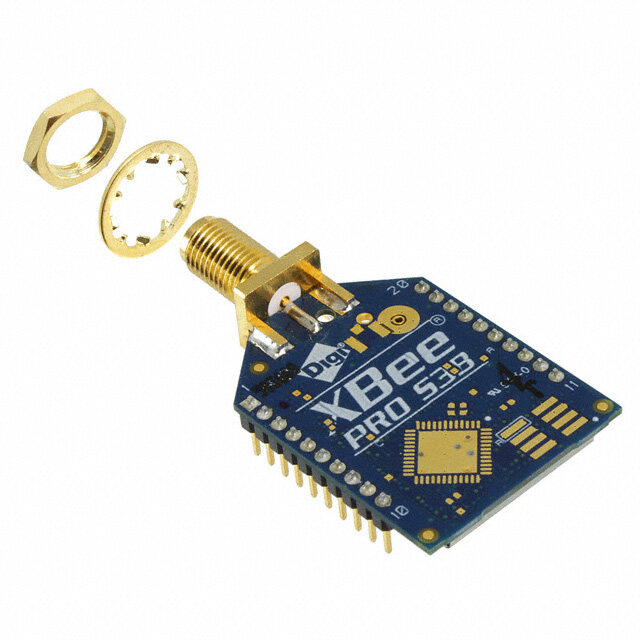

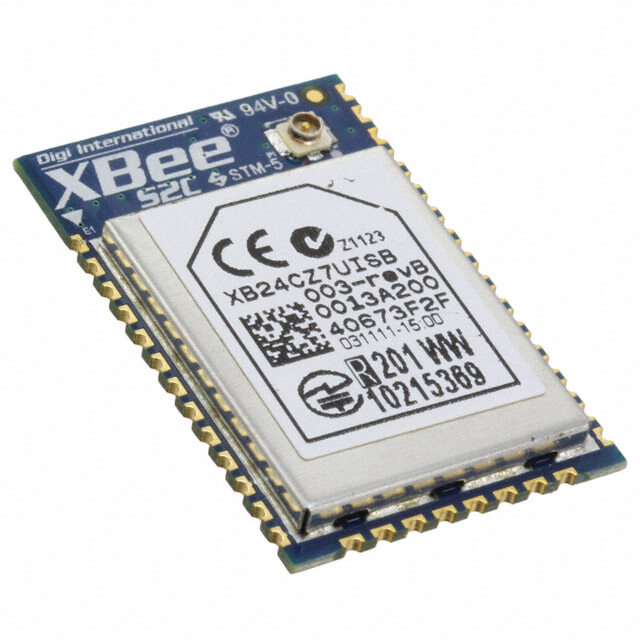
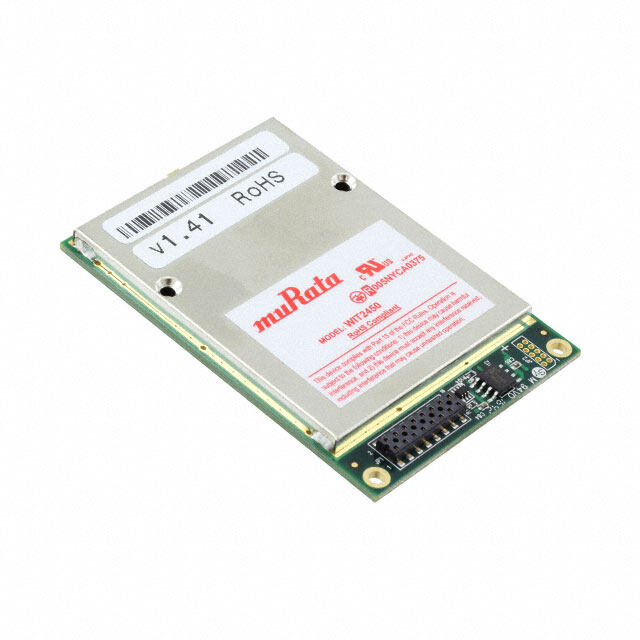
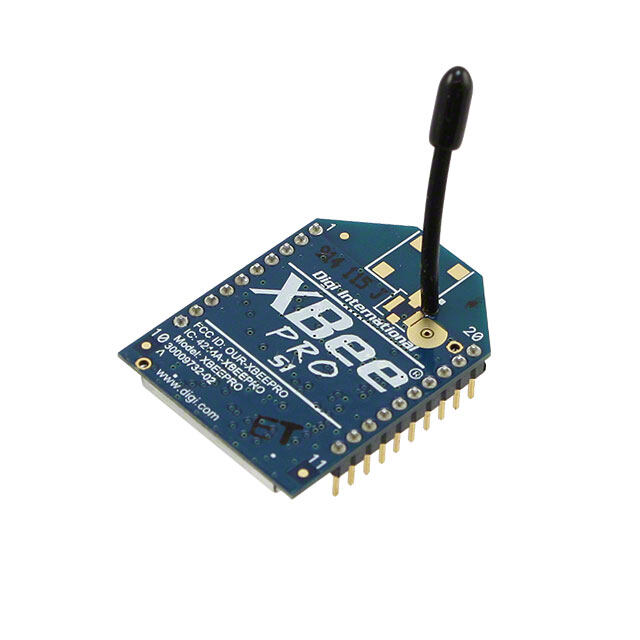
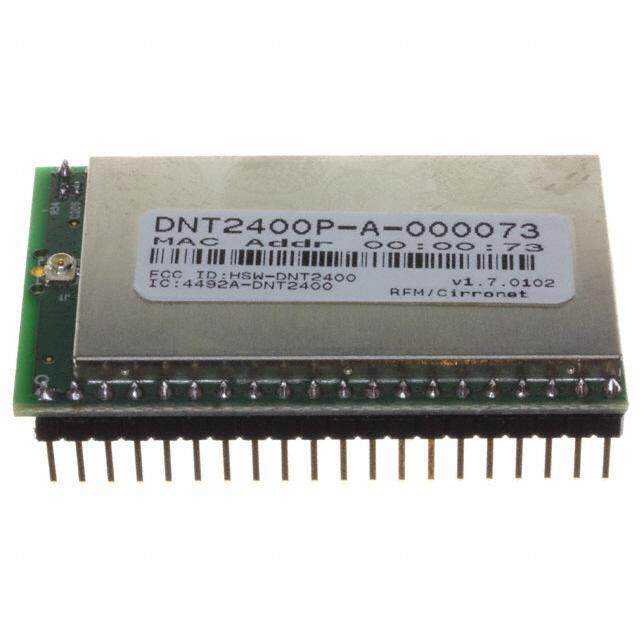
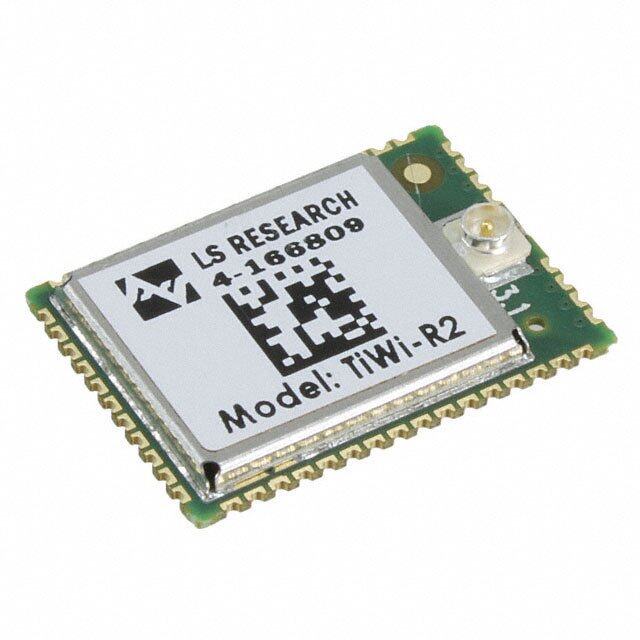


- 商务部:美国ITC正式对集成电路等产品启动337调查
- 曝三星4nm工艺存在良率问题 高通将骁龙8 Gen1或转产台积电
- 太阳诱电将投资9.5亿元在常州建新厂生产MLCC 预计2023年完工
- 英特尔发布欧洲新工厂建设计划 深化IDM 2.0 战略
- 台积电先进制程称霸业界 有大客户加持明年业绩稳了
- 达到5530亿美元!SIA预计今年全球半导体销售额将创下新高
- 英特尔拟将自动驾驶子公司Mobileye上市 估值或超500亿美元
- 三星加码芯片和SET,合并消费电子和移动部门,撤换高东真等 CEO
- 三星电子宣布重大人事变动 还合并消费电子和移动部门
- 海关总署:前11个月进口集成电路产品价值2.52万亿元 增长14.8%


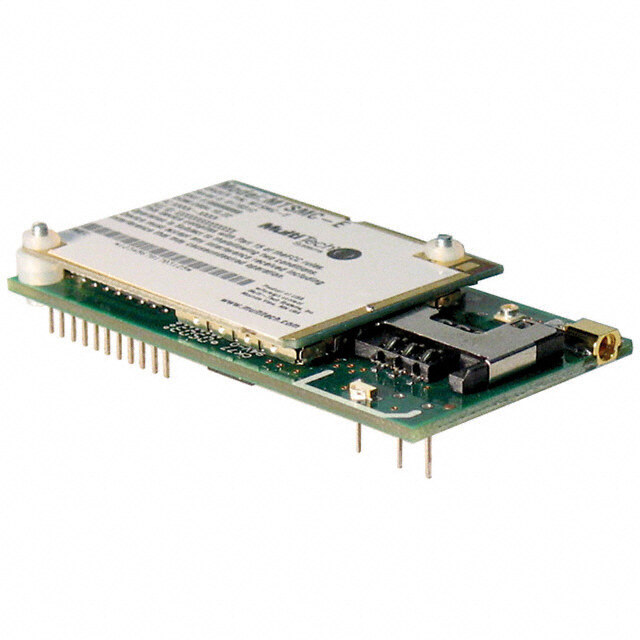
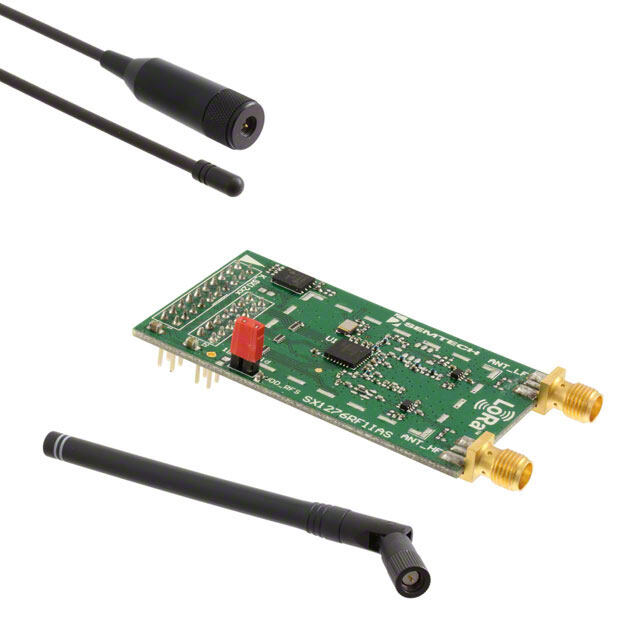


PDF Datasheet 数据手册内容提取
BLE113 DATA SHEET Wednesday, 27 November 2013 Version 1.2
Copyright © 2000-2013 Bluegiga Technologies All rights reserved. Bluegiga Technologies assumes no responsibility for any errors which may appear in this manual. Furthermore, Bluegiga Technologies reserves the right to alter the hardware, software, and/or specifications detailed here at any time without notice and does not make any commitment to update the information contained here. Bluegiga’s products are not authorized for use as critical components in life support devices or systems. The WRAP is a registered trademark of Bluegiga Technologies The Bluetooth trademark is owned by the Bluetooth SIG Inc., USA and is licensed to Bluegiga Technologies. All other trademarks listed herein are owned by their respective owners. Bluegiga Technologies Oy
VERSION HISTORY Version Comment 0.1 Draft 0.2 Confidential watermark added 0.3 Marketing information updated Current consumption, recommended land pattern, layout guide, example 0.4 schematic, antenna characteristics 0.5 Minor changes 0.51 Absolute maximum ratings: all supply nets must have the same voltage 0.52 Pin dimensions and recommended land pattern 0.53 FCC and IC statements 0.54 TXP vs HW config setting 0.55 Dimensions 0.56 CE, MIC Japan, KCC 0.57 Chapter 2.1 rephrased 0.58 Missing dimensions added to Figure 7 1.0 Preliminary datasheet -> production datasheet. No changes 1.1 Pull-up resistors added to P1_0 and P1_1 in the example schematic 1.2 5 mm restriction removed from the FCC statement Bluegiga Technologies Oy
TABLE OF CONTENTS 1 BLE113 Product numbering ..........................................................................................................................6 2 Pinout and Terminal Description ...................................................................................................................7 2.1 I/O Ports .............................................................................................................................................. 10 2.2 UART ................................................................................................................................................... 10 2.3 Electrical Characteristics ..................................................................................................................... 11 2.4 Absolute Maximum Ratings ................................................................................................................ 11 2.5 Recommended Operating Conditions ................................................................................................. 11 2.6 DC Characteristics .............................................................................................................................. 11 2.7 Current Consumption .......................................................................................................................... 12 2.8 Antenna characteristics ....................................................................................................................... 13 3 Physical Dimensions .................................................................................................................................. 16 4 Power-On Reset and Brownout Detector ................................................................................................... 18 5 Design Guidelines ...................................................................................................................................... 19 5.1 General Design Guidelines ................................................................................................................. 19 5.2 Layout Guide Lines ............................................................................................................................. 19 5.3 BLE113-A Layout Guide ..................................................................................................................... 20 6 Soldering Recommendations ..................................................................................................................... 22 7 Block diagram ............................................................................................................................................. 23 8 Certifications ............................................................................................................................................... 26 8.1 Bluetooth ............................................................................................................................................. 26 8.2 FCC and IC ......................................................................................................................................... 26 8.3 CE ....................................................................................................................................................... 29 8.4 MIC Japan ........................................................................................................................................... 29 8.5 KCC (Korea) ........................................................................................................................................ 29 9 Contact Information .................................................................................................................................... 30 Bluegiga Technologies Oy
BLE113 Bluetooth® Smart Module DESCRIPTION KEY FEATURES: BLE113 is a Bluetooth Smart module targeted for small and low power sensors and Bluetooth v. 4.0, single mode compliant accessories. It integrates all features required o Supports master and slave modes for a Bluetooth Smart application: Bluetooth o Up to eight connections radio, software stack and GATT based Integrated Bluetooth Smart stack profiles. o GAP, GATT, L2CAP and SMP BLE113 Bluetooth Smart module can also host o Bluetooth Smart profiles end user applications, which means no Radio performance external micro controller is required in size or o TX power : 0 dBm to -23 dBm price constrained devices. o Receiver sensitivity: -93 dBm BLE113 module has flexible hardware Ultra low current consumption interfaces to connect to different peripherals o Transmit: 18.2 mA (0dBm) and sensors. BLE113 can be powered directly o Transmit: 14.3 mA (0dBm + from a standard 3V coin cell battery or pair of DC/DC) AAA batteries. o Receive: 14.3 mA o Sleep mode 3: 0.4 uA In lowest power sleep mode it consumes only Flexible peripheral interfaces 500nA and will wake up in few hundred o UART and SPI microseconds. o I2C, PWM and GPIO o 12-bit ADC APPLICATIONS: Host interfaces: o UART Health and fitness sensors Programmable 8051 processor for stand- Medical sensors alone operation iPhone and iPad accessories Dimensions: 9.15 x 15.75 x 2.1 mm Security and proximity tags Bluetooth, CE, FCC, IC, South Korea and Key fobs Japan qualified Smart home sensors and collectors Wireless keys HID keyboards and mice Bluegiga Technologies Oy
1 BLE113 Product numbering Antenna: A = Internal E = External N = RF pin BLE113-A-X Firmware revision Available products and product codes Product code Description BLE113-A-v1 BLE113 with integrated chip antenna Bluegiga Technologies Oy Page 6 of 30
2 Pinout and Terminal Description 1 GND 2 GND 3 GND 4 GND 5 GND 6 GND 7 36 GND GND 8 35 AVDD NC 9 34 P2_2 Reset# 10 33 P2_1 P0_0 11 32 P2_0 P0_1 12 31 P1_7 P0_2 13 30 P1_6 P0_3 14 29 SCL P0_4 15 28 SDA P0_5 16 27 NC P0_6 17 26 DVDD P0_7 18 GND 5 4 3 2 1 0 GND 25 _ _ _ _ _ _ 1 1 1 1 1 1 P P P P P P 9 0 1 2 3 4 1 2 2 2 2 2 Figure 1: BLE113 PIN PAD TYPE DESCRIPTION NUMBER RESET 34 Active low reset. 1 - 7, 18, GND GND GND 25, 36 DVDD 17 Supply voltage Supply voltage 2V - 3.6V AVDD 8 Supply voltage Supply voltage 2V - 3.6V Table 1: Supply and RF Terminal Descriptions Bluegiga Technologies Oy Page 7 of 30
PIN PIN NAME PIN TYPE DESCRIPTION NUMBER 9 P2_2 10 P2_1 11 P2_0 12 P1_7 13 P1_6 19 P1_5 20 P1_4 21 P1_3 Digital I/O Configurable I/O port, See table 3 22 P1_2 26 P0_7 27 P0_6 28 P0_5 29 P0_4 30 P0_3 31 P0_2 32 P0_1 33 P0_0 23 P1_1 Configurable I/O port with 20mA driving Digital I/O capability, See table 3 24 P1_0 Can be used as I2C clock pin or digital I/O. Leave 14 SCL I2C clock or digital I/O floating if not used. If grounded disable pull up. Can be used as I2C data pin or digital I/O. Leave 15 SDA I2C data or digital I/O floating if not used. If grounded disable pull up. Table 2: Terminal Descriptions *)BLE113 is configurable as either SPI master or SPI slave Bluegiga Technologies Oy Page 8 of 30
PERIPHERAL / P0 P1 P2 HARDWARE.XML Example (* FUNCTION 7 6 5 4 3 2 1 0 7 6 5 4 3 2 1 0 2 1 0 ADC A7 A6 A5 A4 A3 A2 A1 A0 Alt.1 C SS MO MI <usart channel="0" mode="spi_master" alternate="1" ... USART 0 SPI (** Alt.2 MO MI C SS <usart channel="0" mode="spi_master" alternate="2" ... Alt.1 RT CT TX RX <usart channel="0" mode="uart" alternate="1" ... USART 0 UART Alt.2 TX RX RT CT <usart channel="0" mode="uart" alternate="2" ... Alt.1 MI MO C SS <usart channel="1" mode="spi_master" alternate="1" ... USART 1 SPI (** Alt.2 MI MO C SS <usart channel="1" mode="spi_master" alternate="2" ... Alt.1 RX TX RT CT <usart channel="1" mode="uart" alternate="1" ... USART 1 UART Alt.2 RX TX RT CT <usart channel="1" mode="uart" alternate="2" ... Alt.1 4 3 2 1 0 <timer index="1" alternate="1" ... TIMER 1 Alt.2 3 4 0 1 2 <timer index="1" alternate="2" ... Alt.1 1 0 <timer index="3" alternate="1" ... TIMER 3 Alt.2 1 0 <timer index="3" alternate="2" ... Alt.1 1 0 <timer index="4" alternate="1" ... TIMER 4 Alt.2 0 <timer index="4" alternate="2" ... DEBUG DC DD OBSSEL 5 4 3 2 1 0 *) Refer to Profile Toolkit Developer Guide for detailed settings **) SS is the slave select signal when BLE113 is set as SPI slave. When set as SPI master, any available I/O can be used as chip select signal of BLE113 Table 3:Peripheral I/O Pin Mapping Bluegiga Technologies Oy Page 9 of 30
2.1 I/O Ports Each I/O port can be configured as an input or output. When configured as input, each I/O port, except pins P1_0 and P1_1, can also be configured with internal pull-up, pull-down or tri-state. Pull-down or pull-up can only be configured to whole port, not individual pins. Unused I/O pins should have defined level and not be floating. See the Profile Toolkit developer guide for more information about the configuration. During reset the I/O pins are configured as inputs with pull-ups. P1_0 and P1_1 are inputs but do not have pull-up or pull-down. 2.2 UART UART baud rate can be configured up 2 Mbps. See the Profile Toolkit developer guide for more information. Following table lists commonly used baud rates for BLE113 Baud rate (bps) Error (%) 2400 0.14 4800 0.14 9600 0.14 14 400 0.03 19 200 0.14 28 800 0.03 38 400 0.14 57 600 0.03 76 800 0.14 115 200 0.03 230 400 0.03 Table 4: Commonly used baud rates for BLE113 Bluegiga Technologies Oy Page 10 of 30
2.3 Electrical Characteristics 2.4 Absolute Maximum Ratings Note: These are absolute maximum ratings beyond which the module can be permanently damaged. These are not maximum operating conditions. The maximum recommended operating conditions are in the table 6. Rating Min Max Unit Storage Temperature -40 85 °C AVDD,DVDD (* -0.3 3.9 V Other Terminal Voltages VSS-0.4 VDD+0.4 V *)All supply nets must have the same voltage Table 5: Absolute Maximum Ratings 2.5 Recommended Operating Conditions Rating Min Max Unit Operating Temperature Range -40 85 °C AVDD, DVDD 2.0 3.6 V *) Supply voltage noise should be less than 10mVpp. Excessive noise at the supply voltage will reduce the RF performance. Table 6: Recommended Operating Conditions 2.6 DC Characteristics Parameter Test Conditions Min Typ Max Unit Logic-0 input voltage 0.5 V Logic-1 input voltage 2.5 V Logic-0 input current Input equals 0V -50 50 nA Logic-1 input current Input equals VDD -50 50 nA I/O pin pull-up and pull-down resistors 20 kΩ Logic-0 output volatge, 4 mA pins Output load 4 mA 0.5 V Logic-1 output voltage, 4 mA pins Outoput load 4 mA 2.4 V For detailed I/O terminal characteristic and timings refer to the CC2541 datasheet available in (http://www.ti.com/lit/ds/symlink/cc2541.pdf) Bluegiga Technologies Oy Page 11 of 30
2.7 Current Consumption Power mode hardware.xml Min Typ Max Unit <txpower power = "1"/> 18.2 mA <slow clock enable = "true"/> <txpower power = "7"/> 18.3 mA <slow clock enable = "true"/> <txpower power = "15"/> 20.7 mA <slow clock enable = "true"/> Transmit <txpower power = "1"/> 23.6 mA <slow clock enable = "false"/> <txpower power = "7"/> 23.6 mA <slow clock enable = "false"/> <txpower power = "15"/> 26.1 mA <slow clock enable = "false"/> <slow clock enable = "true"/> 21.9 mA Receive <slow clock enable = "false"/> 27.0 mA Power mode 1 270 uA Power mode 2 1 uA Power mode 3 0.5 uA Table 7: Current consumption of BLE113 Figure 2: BLE113 TX peak current as a function of the setting in the HW configuration file Bluegiga Technologies Oy Page 12 of 30
Figure 3: BLE113 TX power as a function of the setting in the HW configuration file 2.8 Antenna characteristics The antenna is monopole type of chip antenna. The antenna impedance matching is optimized for 1 mm – 2 mm mother board PCB thickness. The radiation pattern is impacted by the layout of the mother board. Typically the highest gain is towards GND plane and weakest gain away from the GND plane. Figures 4 – 6 show the radiation pattern of BLE113 when mounted to the development board. The typical efficiency of the antenna is 25…35% depending on the mother board layout. Maximum gain is 0.5 dBi. Bluegiga Technologies Oy Page 13 of 30
Figure 4: Radiation pattern of BLE113, top view Figure 5: Radiation pattern of BLE113, front view Bluegiga Technologies Oy Page 14 of 30
Figure 6: Radiation pattern of BLE113, side view Bluegiga Technologies Oy Page 15 of 30
3 Physical Dimensions Figure 7: Physical dimensions and pinout (top view) 15.73 mm (+/-0.1mm) 0.3 mm 0.85 mm a n ) n m e m nt A 1 0. - / + ( m m m 5 m 1 9 9. 4. 0.6 mm 5.53 mm 9.6 mm 0.6 mm Figure 8: Physical dimensions (top view) Bluegiga Technologies Oy Page 16 of 30
1.3 mm 1.9 mm (+/-10%) 0.6 mm 15.73 (+/-0.1) mm Figure 9: Physical dimensions (side view) Figure 10: Recommended land pattern for BLE113-A Bluegiga Technologies Oy Page 17 of 30
4 Power-On Reset and Brownout Detector BLE113 includes a power-on reset (POR), providing correct initialization during device power on. It also includes a brownout detector (BOD) operating on the regulated 1.8-V digital power supply only. The BOD protects the memory contents during supply voltage variations which cause the regulated 1.8-V power to drop below the minimum level required by digital logic, flash memory, and SRAM. When power is initially applied, the POR and BOD hold the device in the reset state until the supply voltage rises above the power-on-reset and brownout voltages. Bluegiga Technologies Oy Page 18 of 30
5 Design Guidelines 5.1 General Design Guidelines LE113 can be used directly with a coin cell battery. Due to relatively high internal resistance of a coin cell battery it is recommended to place a 100uF capacitor in parallel with the battery. The internal resistance of a coin cell battery is initially in the range of 10 ohms but the resistance increases rapidly as the capacity is used. Basically the higher the value of the capacitor the higher is the effective capacity of the battery and thus the longer the life time for the application. The minimum value for the capacitor depends on the end application and the maximum transmit power used. The leakage current of a 100uF capacitor is in the range of 0.5 uA to 3 uA and generally ceramic capacitors have lower leakage current than tantalum or aluminum electrolytic capacitors. Optionally TI’s TPS62730 can be used to reduce the current consumption during TX/RX and data processing 6 stages. TPS62730 5is an ultra low powe4r DC/DC converter w3ith by-pass mode an2d will reduce the cur1rent consumption during transmission nominally by ~20% when using 3V coin cell battery. REVISION RECORD LTR ECO NO: APPROVED: DATE: D 2V...3V3_MOD D 1 R4 2 VBAT NP C11040uF/16V/U410%/TAN12 BATTERYHOLDER_SMD_CR2032 C10 2.2uF/10V/X5R P1_7/DCDC TP35S62VO7INN3/B0YP4UGND5 VSOTSUAWTT1262.2µH±20L%1, 13C110mA, 0.42.2uF/10V/X5R3ohm SSDCAL R16124.7K, 50V, 0.063W2R17V.12..3V34.7K, 50V, 0.063W_MOD C5 0.47uF/6.3V/X5RC6 0.47uF/6.3V/X5R PPP122___721///DPPCRRDOOCGG 111111111123456789012345678GGGGGGGAPPPPPSSNDGNNNNNNNV22211CDCVNDDDDDDDD_____LADDD21076D P1_5P1_4P1_3P1_2P1_1P1_0REPPPPPPPPGGS00000000NNNE________DDCT76543210222223333333567890123456 2V...3V3_MO2DVS..10K, 50V, 0.063WW.332141V321_R1MOD 192021222324 C BLME1O1DX2_P2 2 R21 1 C C8 0.1uF/10V/X5R SCL 1234VBNSDYCCDPLIO16NC15NC14VDD IGGNNNNTDDC111110123 C7 4.7uF/4V/X5R/10% 11002KK,, 55P002VVRR_,,2E 200S/..PE00RT66O1_33GNWW 13579810J1 246 2V...3VP32__S1W/PROG 5GND INT29 HEADER_2X5_SMD_1.27MM SDA SA0 NC U2 PROGRAMMING INTERFACE 6 7 8 MMA8451Q SDA P1_0 and P1_1 require external pull-up or pull-down resistor if configured as inputs B B Figure 11: Example schematic for BLE113 with a coin cell battery, TPS62730 DCDC converter and an I2C accelerometer 5.2 Layout Guide Lines Use good layout practices to avoid excessive noise coupling to supply voltage traces or sensitive analog signal traces. If using overlapping ground planes use stitching vias separated by maxCO MP3ANY :mm Btloue gaigvao Tiedch neolmogiiesss Oiyon A A from the edges of the PCB. Connect all the GND pins directly to a solid GND plane aTITLnE:d make sure that there BLE113 Example Schematic is a low impedance path for the return current following the signal anDRAWdN:DA TEsD:upPRpAly 2t0r12a-08c-0e3 s all the way from start to the end. CHECKED: - -DATED: CODE: SIZE: DRAWING NO: REV: QUALITY CONTROL:DATED: -C1.0 - A good practice is to dedicate one of the inner layers to a solid GND plane and one of the inner layers to RELEASED: DATED: SCALE: SHEET: 1 O5F supply voltage planes and traces and route all the signals on top and bottom layers of the PCB. This arrangement will make sure that any return current follows the forward current as close as possible and any loops are minimized. Bluegiga Technologies Oy Page 19 of 30
Layout • Supply voltage – If possible use solid power plane – Make sure that solid GND plane follows the traces all the way – Do not route supply voltage traces across separated GND regions so that the path for the return current is cut • MIC input – Place LC filtering and DC coupling capacitors symmetrically as close to audio pins as possible – Place MIC biasing resistors symmetrically as close to microhone as possible. – Make sure that the bias trace does not cross separated GND regions (DGND -> AGND) so that the path for the return current is cut. If this is not possible the do not separate GND regions but keep one solid GND plane. – Keep the trace as short as possible Recommended PCB layer configuration Signals GND Power Signals Figure 12: Typical 4-layer PCB construction Overlapping GND layers without Overlapping GND layers with GND stitching vias GND stitching vias shielding the RF energy Figure 13: Use of stitching vias to avoid emissions from the edges of the PCB 5.3 BLE113-A Layout Guide For optimal performance of the antenna place the module at the corner of the PCB as shown in the figure 14. Do not place any metal (traces, components, battery etc.) within the clearance area of the antenna. Connect all the GND pins directly to a solid GND plane. Place the GND vias as close to the GND pins as possible. Use good layout practices to avoid any excessive noise coupling to signal lines or supply voltage lines. Avoid placing plastic or any other dielectric material closer than 5 mm from the antenna. Any dielectric closer than 5 mm from the antenna will detune the antenna to lower frequencies. Figure 14: Recommended layout for BLE113-A Bluegiga Technologies Oy Page 20 of 30
Figure 15: Typical return loss of BLE113-A with two different mother board PCB thickness Bluegiga Technologies Oy Page 21 of 30
6 Soldering Recommendations BLE113 is compatible with industrial standard reflow profile for Pb-free solders. The reflow profile used is dependent on the thermal mass of the entire populated PCB, heat transfer efficiency of the oven and particular type of solder paste used. Consult the datasheet of particular solder paste for profile configurations. Bluegiga Technologies will give following recommendations for soldering the module to ensure reliable solder joint and operation of the module after soldering. Since the profile used is process and layout dependent, the optimum profile should be studied case by case. Thus following recommendation should be taken as a starting point guide. - Refer to technical documentations of particular solder paste for profile configurations - Avoid using more than one flow. - Reliability of the solder joint and self-alignment of the component are dependent on the solder volume. Minimum of 150m stencil thickness is recommended. - Aperture size of the stencil should be 1:1 with the pad size. - A low residue, “no clean” solder paste should be used due to low mounted height of the component. Figure 16: Reference reflow profile Bluegiga Technologies Oy Page 22 of 30
7 Block diagram BLE113 is based on TI’s CC2541 chip. Embedded 32 MHz and 32.678 kHz crystals are used for clock generation. Matched balun and low pass filter provide optimal radio performance with extremely low spurious emissions. Small ceramic chip antenna gives good radiation efficiency even when the module is used in layouts with very limited space. 2V –3.6V Reset 32 MHz 32.768 XTAL kHz XTAL CC2540 Clock Voltage regulator Reset Debug interface Power-on reset SRAM 8051 CPU core and memory arbitrator Flash Analog comparator IRQ controller DMA I/O I/O controller LRinRakad dliaoSioyR re AearMgr ebisnittgeeirrnse ADC Demodulator Synth Modulator Assembly I2C variant: BLE112-A or USART 0 BLE112-E USART 1 Frequency TIMER 1 Receive synthetisizer Transmit conUn.eFcl tor (BLE112-E) TIMER 2 TIMER 3 Balun + Chip TIMER 4 LPF antenna BLE112-A) Figure 17: Simplified block diagram of BLE113 CPU and Memory The 8051 CPU core is a single-cycle 8051-compatible core. It has three different memory access buses (SFR, DATA, and CODE/XDATA), a debug interface, and an 18-input extended interrupt unit. The memory arbiter is at the heart of the system, as it connects the CPU and DMA controller with the physical memories and all peripherals through the SFR bus. The memory arbiter has four memory-access points, access of which can map to one of three physical memories: an SRAM, flash memory, and XREG/SFR registers. It is responsible for performing arbitration and sequencing between simultaneous memory accesses to the same physical memory. The SFR bus is a common bus that connects all hardware peripherals to the memory arbiter. The SFR bus also provides access to the radio registers in the radio register bank, even though these are indeed mapped into XDATA memory space. Bluegiga Technologies Oy Page 23 of 30
The 8-KB SRAM maps to the DATA memory space and to parts of the XDATA memory spaces. The SRAM is an ultralow-power SRAM that retains its contents even when the digital part is powered off (power modes 2 and 3). The 128/256 KB flash block provides in-circuit programmable non-volatile program memory for the device, and maps into the CODE and XDATA memory spaces. Peripherals Writing to the flash block is performed through a flash controller that allows page-wise erasure and 4-bytewise programming. A versatile five-channel DMA controller is available in the system, accesses memory using the XDATA memory space, and thus has access to all physical memories. Each channel (trigger, priority, transfer mode, addressing mode, source and destination pointers, and transfer count) is configured with DMA descriptors that can be located anywhere in memory. Many of the hardware peripherals (AES core, flash controller, USARTs, timers, ADC interface, etc.) can be used with the DMA controller for efficient operation by performing data transfers between a single SFR or XREG address and flash/SRAM. Each CC2541 contains a unique 48-bit IEEE address that can be used as the public device address for a Bluetooth device. Designers are free to use this address, or provide their own, as described in the Bluetooth specification. The interrupt controller services a total of 18 interrupt sources, divided into six interrupt groups, each of which is associated with one of four interrupt priorities. I/O and sleep timer interrupt requests are serviced even if the device is in a sleep mode (power modes 1 and 2) by bringing the CC2541 back to the active mode. The debug interface implements a proprietary two-wire serial interface that is used for in-circuit debugging. Through this debug interface, it is possible to erase or program the entire flash memory, control which oscillators are enabled, stop and start execution of the user program, execute instructions on the 8051 core, set code breakpoints, and single-step through instructions in the code. Using these techniques, it is possible to perform in-circuit debugging and external flash programming elegantly. The I/O controller is responsible for all general-purpose I/O pins. The CPU can configure whether peripheral modules control certain pins or whether they are under software control, and if so, whether each pin is configured as an input or output and if a pullup or pulldown resistor in the pad is connected. Each peripheral that connects to the I/O pins can choose between two different I/O pin locations to ensure flexibility in various applications. The sleep timer is an ultra low power timer that uses an external 32.768-kHz crystal oscillator. The sleep timer runs continuously in all operating modes except power mode 3. Typical applications of this timer are as a real- time counter or as a wake-up timer to exit power modes 1 or 2. Timer 1 is a 16-bit timer with timer/counter/PWM functionality. It has a programmable prescaler, a 16-bit period value, and five individually programmable counter/capture channels, each with a 16-bit compare value. Each of the counter/capture channels can be used as a PWM output or to capture the timing of edges on input signals. It can also be configured in IR generation mode, where it counts timer 3 periods and the output is ANDed with the output of timer 3 to generate modulated consumer IR signals with minimal CPU interaction. Timer 2 is a 40-bit timer used by the Bluetooth low energy stack. It has a 16-bit counter with a configurable timer period and a 24-bit overflow counter that can be used to keep track of the number of periods that have transpired. A 40-bit capture register is also used to record the exact time at which a start-of-frame delimiter is received/transmitted or the exact time at which transmission ends. There are two 16-bit timer-compare registers and two 24-bit overflow-compare registers that can be used to give exact timing for start of RX or TX to the radio or general interrupts. Timer 3 and timer 4 are 8-bit timers with timer/counter/PWM functionality. They have a programmable prescaler, an 8-bit period value, and one programmable counter channel with an 8-bit compare value. Each of the counter channels can be used as PWM output. USART 0 and USART 1 are each configurable as either an SPI master/slave or a UART. They provide double buffering on both RX and TX and hardware flow control and are thus well suited to high-throughput full-duplex applications. Each USART has its own high-precision baud-rate generator, thus leaving the ordinary timers Bluegiga Technologies Oy Page 24 of 30
free for other uses. When configured as SPI slaves, the USARTs sample the input signal using SCK directly instead of using some oversampling scheme, and are thus well-suited for high data rates. The AES encryption/decryption core allows the user to encrypt and decrypt data using the AES algorithm with 128-bit keys. The AES core also supports ECB, CBC, CFB, OFB, CTR, and CBC-MAC, as well as hardware support for CCM. The ADC supports 7 to 12 bits of resolution with a corresponding range of bandwidths from 30-kHz to 4-kHz, respectively. DC and audio conversions with up to eight input channels (I/O controller pins) are possible. The inputs can be selected as single-ended or differential. The reference voltage can be internal, AVDD, or a single-ended or differential external signal. The ADC also has a temperature-sensor input channel. The ADC can automate the process of periodic sampling or conversion over a sequence of channels. The I2C module provides a digital peripheral connection with two pins and supports both master and slave operation. I2C support is compliant with the NXP I2C specification version 2.1 and supports standard mode (up to 100 kbps) and fast mode (up to 400 kbps). In addition, 7-bit device addressing modes are supported, as well as master and slave modes.. The ultralow-power analog comparator enables applications to wake up from PM2 or PM3 based on an analog signal. Both inputs are brought out to pins; the reference voltage must be provided externally. The comparator output is connected to the I/O controller interrupt detector and can be treated by the MCU as a regular I/O pin interrupt. RF front end RF front end includes combined matched balun and low pass filter, and ceramic chip antenna with matching network. Optimal matching combined with effective low pass filter provides extremely low in-band spurious emissions and harmonics. Bluegiga Technologies Oy Page 25 of 30
8 Certifications BLE113 is compliant to the following specifications. 8.1 Bluetooth BLE113 is BT qualified as a controller subsystem. As a controller subsystem the module can be used as such with a Host Subsystem to make a Bluetooth end product without additional qualification or QDID. The Bluetooth QDID of BLE13 is B021015. The Bluetooth listing can be vied from the link below. https://www.bluetooth.org/tpg/QLI_viewQDL.cfm?qid=21015 8.2 FCC and IC This device complies with Part 15 of the FCC Rules. Operation is subject to the following two conditions: (1) this device may not cause harmful interference, and (2) this device must accept any interference received, including interference that may cause undesired operation. Any changes or modifications not expressly approved by Bluegiga Technologies could void the user’s authority to operate the equipment. FCC RF Radiation Exposure Statement: This equipment complies with FCC radiation exposure limits set forth for an uncontrolled environment. End users must follow the specific operating instructions for satisfying RF exposure compliance. This transmitter meets both portable and mobile limits as demonstrated in the RF Exposure Analysis. This transmitter must not be co-located or operating in conjunction with any other antenna or transmitter except in accordance with FCC multi-transmitter product procedures. IC Statements: This device complies with Industry Canada licence-exempt RSS standard(s). Operation is subject to the following two conditions: (1) this device may not cause interference, and (2) this device must accept any interference, including interference that may cause undesired operation of the device. Under Industry Canada regulations, this radio transmitter may only operate using an antenna of a type and maximum (or lesser) gain approved for the transmitter by Industry Canada. To reduce potential radio interference to other users, the antenna type and its gain should be so chosen that the equivalent isotropically radiated power (e.i.r.p.) is not more than that necessary for successful communication. OEM Responsibilities to comply with FCC and Industry Canada Regulations The BLE113 module has been certified for integration into products only by OEM integrators under the following condition: Bluegiga Technologies Oy Page 26 of 30
The transmitter module must not be co-located or operating in conjunction with any other antenna or transmitter except in accordance with FCC multi-transmitter product procedures. As long as the two condition above is met, further transmitter testing will not be required. However, the OEM integrator is still responsible for testing their end-product for any additional compliance requirements required with this module installed (for example, digital device emissions, PC peripheral requirements, etc.). IMPORTANT NOTE: In the event that these conditions can not be met (for certain configurations or co- location with another transmitter), then the FCC and Industry Canada authorizations are no longer considered valid and the FCC ID and IC Certification Number can not be used on the final product. In these circumstances, the OEM integrator will be responsible for re-evaluating the end product (including the transmitter) and obtaining a separate FCC and Industry Canada authorization. End Product Labeling The BLE113 module is labeled with its own FCC ID and IC Certification Number. If the FCC ID and IC Certification Number are not visible when the module is installed inside another device, then the outside of the device into which the module is installed must also display a label referring to the enclosed module. In that case, the final end product must be labeled in a visible area with the following: “Contains Transmitter Module FCC ID: QOQBLE113” “Contains Transmitter Module IC: 5123A-BGTBLE113” or “Contains FCC ID: QOQBT113” “Contains IC: 5123A-BGTBLE113” The OEM integrator has to be aware not to provide information to the end user regarding how to install or remove this RF module or change RF related parameters in the user manual of the end product. 8.2.1 FCC et IC Déclaration d’IC : Ce dispositif est conforme aux normes RSS exemptes de licence d’Industrie Canada. Son fonctionnement est assujetti aux deux conditions suivantes : (1) ce dispositif ne doit pas provoquer de perturbation et (2) ce dispositif doit accepter toute perturbation, y compris les perturbations qui peuvent entraîner un fonctionnement non désiré du dispositif. Selon les réglementations d’Industrie Canada, cet émetteur radio ne doit fonctionner qu’avec une antenne d’une typologie spécifique et d’un gain maximum (ou inférieur) approuvé pour l’émetteur par Industrie Canada. Pour réduire les éventuelles perturbations radioélectriques nuisibles à d’autres utilisateurs, le type d’antenne et son gain doivent être choisis de manière à ce que la puissance isotrope rayonnée équivalente (P.I.R.E.) n’excède pas les valeurs nécessaires pour obtenir une communication convenable. Responsabilités des OEM quant à la conformité avec les réglementations de FCC et d’Industrie Canada Les modules BLE113 ont été certifiés pour entrer dans la fabrication de produits exclusivement réalisés par des intégrateurs dans les conditions suivantes : Bluegiga Technologies Oy Page 27 of 30
Le module transmetteur ne doit pas être installé ou utilisé en concomitance avec une autre antenne ou un autre transmetteur. Tant que ces deux conditions sont réunies, il n’est pas nécessaire de procéder à des tests supplémentaires sur le transmetteur. Cependant, l’intégrateur est responsable des tests effectués sur le produit final afin de se mettre en conformité avec d’éventuelles exigences complémentaires lorsque le module est installé (exemple : émissions provenant d’appareils numériques, exigences vis-à-vis de périphériques informatiques, etc.) REMARQUE IMPORTANTE : En cas d’inobservance de ces conditions (en ce qui concerne certaines configurations ou l’emplacement du dispositif à proximité d’un autre émetteur), les autorisations de FCC et d’Industrie Canada ne seront plus considérées valables et l’identification de FCC et le numéro de certification d’IC ne pourront pas être utilisés sur le produit final. Dans ces cas, l’intégrateur OEM sera chargé d’évaluer à nouveau le produit final (y compris l’émetteur) et d’obtenir une autorisation indépendante de FCC et d’Industrie Canada. Étiquetage du produit final Le module BLE113 est étiqueté avec sa propre identification FCC et son propre numéro de certification IC. Si l’identification FCC et le numéro de certification IC ne sont pas visibles lorsque le module est installé à l’intérieur d’un autre dispositif, la partie externe du dispositif dans lequel le module est installé devra également présenter une étiquette faisant référence au module inclus. Dans ce cas, le produit final devra être étiqueté sur une zone visible avec les informations suivantes : « Contient module émetteur identification FCC : QOQBLE113 » « Contient module émetteur IC : 5123A-BGTBLE113 » ou « Contient identification FCC : QOQBLE113 » « Contient IC : 5123A-BGTBLE113 » Dans le guide d’utilisation du produit final, l’intégrateur OEM doit s’abstenir de fournir des informations à l’utilisateur final portant sur les procédures à suivre pour installer ou retirer ce module RF ou pour changer les paramètres RF. Bluegiga Technologies Oy Page 28 of 30
8.3 CE BLE113 is conformity with the following standards SAFETY EN 60950-1:2006+A11:2009+A1:2010+A12:2011 EMC (Art. 3(1)(a)): EN 301 489-1 v.1.9.2 EN 301 489-17:V2.2.1 o Radiated electric field immunity, EN 61000-4-3:2006 SPECTRUM (Art. 3(2)): EN 300 328 v1.7.1 o Equivalent isotropic radiated power o Maximum spectral power density EN 300 328 V1.8.1 o Occupied channel bandwidth o Transmitter unwanted spurious emissions in the out-of-band domain o Transmitter unwanted spurious emissions in the spurious domain o Receiver spurious emissions 8.4 MIC Japan BLE113 is certified as a module with type certification number 007-AB0103. As a certified module BLE113 can be integrated to an end product without a need for additional MIC Japan certification of the end product. 8.5 KCC (Korea) BLE113 has type certification in Korea with certification number KCC-CRM-BGT-BLE113. Bluegiga Technologies Oy Page 29 of 30
9 Contact Information Sales: sales@bluegiga.com Technical support: support@bluegiga.com http://techforum.bluegiga.com Orders: orders@bluegiga.com WWW: www.bluegiga.com www.bluegiga.hk Head Office / Finland: Phone: +358-9-4355 060 Fax: +358-9-4355 0660 Sinikalliontie 5A 02630 ESPOO FINLAND Postal address / Finland: P.O. BOX 120 02631 ESPOO FINLAND Sales Office / USA: Phone: +1 770 291 2181 Fax: +1 770 291 2183 Bluegiga Technologies, Inc. 3235 Satellite Boulevard, Building 400, Suite 300 Duluth, GA, 30096, USA Sales Office / Hong-Kong: Phone: +852 3972 2186 Bluegiga Technologies Ltd. Unit 10-18 32/F, Tower 1, Millennium City 1 388 Kwun Tong Road Kwun Tong, Kowloon Hong Kong Bluegiga Technologies Oy Page 30 of 30
Mouser Electronics Authorized Distributor Click to View Pricing, Inventory, Delivery & Lifecycle Information: S ilicon Laboratories: BLE113-A BLE113-A-v1 BLE113-A-M256K BLE113-A-V1C
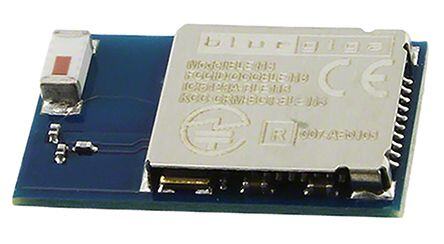
 Datasheet下载
Datasheet下载

